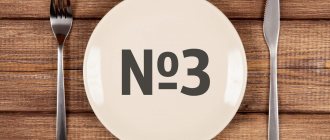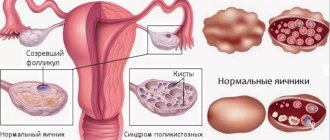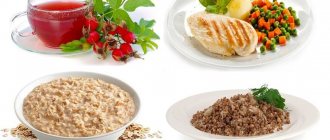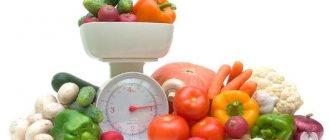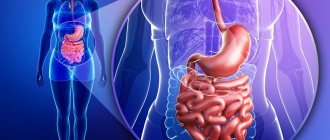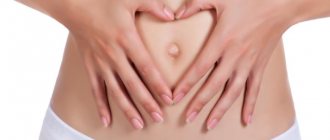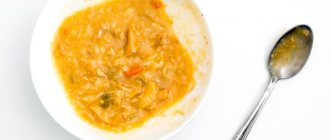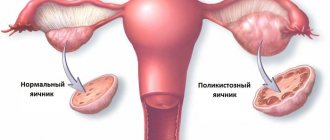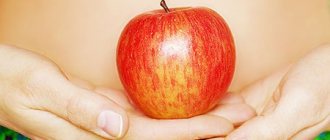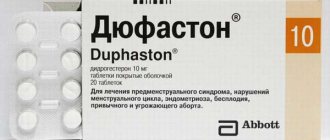General rules
Polycystic ovary syndrome is characterized by impaired production of female sex hormones and excess production of androgens.
Polycystic ovary syndrome manifests itself:
- menstrual irregularities (irregular, infrequent menstruation, dysfunctional uterine bleeding);
- infertility associated with lack of ovulation;
- hirsutism (male pattern hair growth), which is caused by an increased content of androgens ;
- obesity - it is considered both the cause of polycystic disease and as a symptom of this disease;
- oily facial skin, acne and seborrhea ;
- lumps in the chest;
- diabetes mellitus (this is not a mandatory symptom), but existing hormonal disorders against the background of PCOS lead to the development of diabetes.
of hyperandrogenism come to the fore : hirsutism , acne , and in severe cases, androgenic alopecia . The second manifestation of polycystic disease is hyperprolactinemia . High levels of prolactin are combined with menstrual irregularities. Insulin resistance (cells do not respond to insulin ) is perhaps the most important feature of this disease, and it is found 2-3 times more often in these women than in healthy women. Some authors are inclined to believe that insulin resistance and hyperinsulinemia (increased amounts of insulin in the blood) are the cause of polycystic disease, and hyperandrogenism is a consequence of these disorders.
There are two variants of the disease: in women with normal weight and insulin levels (this variant is more severe) and in overweight women with elevated insulin levels. This option responds better to conservative treatment methods.
The main principles of treatment are weight loss and normalization of hormonal disorders and metabolic disorders. If insulin resistance is detected, it is recommended to prescribe Metformin , Siofor and other drugs. They increase the use of glucose by tissues, normalize its levels and reduce appetite.
The fight against obesity is the main stage of treatment. Often, after losing weight, the symptoms of polycystic disease disappear: the menstrual cycle normalizes and ovulation appears. This is explained by the fact that adipose tissue is the site of formation of additional amounts of androgens and estrogen , which are already produced in excess by the ovaries during this disease.
Reducing the mass of adipose tissue leads to normalization of hormone levels and improvement of carbohydrate metabolism. Since this disease is characterized by a combination of hyperandrogenism and insulin resistance, a low-carbohydrate diet and moderate physical activity (swimming, brisk walking, yoga) is the first thing a woman should do. The main principle of the diet is healthy eating and low calorie food.
It is necessary to maintain a balanced diet:
- Eat enough protein.
- Limit your intake of fats (especially animal origin). The total amount of fat should be no more than 30% of the total calories.
- Sharply limit (or eliminate) easily digestible carbohydrates that have a high glycemic index.
- Limit salt and fluid intake.
- Reduce consumption of caffeine-containing products (tea, coffee, cocoa), give up fast food, alcohol, spices.
- Fasting is strictly contraindicated, as it provokes stress and aggravates metabolic disorders. It definitely leads to breakdown and going on a “food binge.”
Eliminate easily digestible carbohydrates:
- confectionery;
- sweet drinks;
- sugar, syrups, ice cream, jams and preserves;
- baked goods, white bread, pasta;
- small cereals;
- sweet fruits, vegetables, berries.
Limit:
- carrots and potatoes as highly starchy vegetables;
- beets, which have a high glycemic index.
The diet for polycystic ovary syndrome includes:
- Adequate amount of protein (can be consumed at every meal), which stabilizes glycemia and ensures satiety.
- Eating fish 3-4 times a week.
- Complex carbohydrates with a low glycemic index are the basis of nutrition. Whole grains, vegetables, and fruits have low GI. In addition, they are rich in dietary fiber, which is important for metabolic disorders. Dietary fiber removes excess cholesterol and sex hormones from the body, reduces appetite and facilitates the process of weight loss. It is possible to introduce additional amounts of bran into dishes.
- Vegetables and fruits at least five times a day (the permissible amount of sweet fruits depends on carbohydrate metabolism disorders).
- Frequent meals in small portions. By reducing the portion size, increase the frequency of meals (three main meals and two or three additional meals).
- Drinking herbal teas, unsweetened dried fruit compotes and natural juices.
- The last meal is 2-3 hours before bedtime and should not contain any carbohydrates.
- Daily calorie content up to 1500 kcal.
- Using fasting days, especially if weight loss has stopped.
A feeling of fullness is provided by lean meat, fish and fresh vegetables - they can be consumed without restriction; the need for sweets is fulfilled by fruits and berries. When choosing foods, especially if you have insulin resistance, you need to pay attention to the glycemic index.
Products with an index less than 50 are recommended for consumption. This is meat, eggs, fish, barley, lentils, peas, beans, cottage cheese, yogurt, soy, peanuts, black bread, apples, oranges, cherries, pears, kiwi, grapefruits, plums, apricots, strawberries, cherry plums, cranberries, lingonberries , celery, peaches, cauliflower, currants, gooseberries, mushrooms, tomatoes, onions, asparagus, cucumbers, broccoli, peppers, zucchini, green salads, brown rice, durum pasta.
If the index of products is 70, you can consume them periodically; more than 70 are prohibited. Based on this, even fruits should be chosen with an index of up to 50. Remember that when consuming foods with a high GI, the level of sugar and insulin increases, which causes the formation of androgens.
Food is prepared boiled, stewed or baked, which minimizes the intake of excess fat. It is necessary to take into account that heat treatment of vegetables increases their GI; therefore, vegetables are best consumed fresh. When it comes to eating meat and poultry, milk and eggs, it is better to find natural household products. Large farm production uses hormones and other substances to feed animals. This can worsen an imbalance in a woman's hormonal system.
It will be useful to introduce products containing:
- Zinc, which prevents the conversion of testosterone into its active form, normalizes the function of the sebaceous glands. Its sources are liver, nuts, legumes, beef, turkey, buckwheat and oatmeal.
- B vitamins . Vitamin B6 is involved in hormone metabolism and reduces sensitivity to testosterone. Vitamins B2 and B3 are needed for the production of thyroid hormones. These vitamins contain sprouted grains, soybeans, oatmeal and barley, brown rice, whole grain products, nuts, seeds, corn, liver, brown rice, beans, brewer's yeast, buckwheat, broccoli, leafy vegetables, lentils.
- Magnesium can be obtained by eating cereals, bran, seeds, nuts, dark green vegetables, peas, buckwheat, and beans. Nuts and seeds (sunflower, flax, pumpkin, sesame) are useful to add to salads, cottage cheese and other dishes.
- Calcium (sesame seeds, milk, cottage cheese) accelerates the maturation of the follicle, vitamin D is involved in the normalization of the menstrual cycle and is a factor in insulin resistance, which is important for polycystic disease. To replenish it, you can take fish oil.
- Antioxidant vitamin E - oatmeal and buckwheat porridge, vegetable oils, all nuts, spinach, avocado.
- Chromium is involved in carbohydrate metabolism, reduces appetite and is used in weight loss programs.
- Its sources are fish and seafood (especially tuna, herring, capelin, mackerel, shrimp, catfish, salmon, flounder), liver, beets, and pearl barley.
Of course, it is difficult to obtain the required daily amount of these elements from foods, so you can take them in the form of medications or food supplements if your doctor does not mind.
What is polycystic ovary syndrome and why does it occur?
Polycystic ovary syndrome is part of the group of neurohormonal endocrine pathologies and is one of the reasons for shortening the fertile period.
PCOS is characterized by irregular menstruation, which is caused by changes in hormonal levels, lack of ovulation, and the presence of excess weight.
Following the principles of dietary nutrition helps normalize weight. Do not forget that adipose tissue independently produces a significant amount of the hormone estrogen and androgens, which are also produced in large quantities by the ovaries. This in turn leads to disruption of the level of female sex hormones and the impossibility of pregnancy due to the development of hyperandrogenism.
Polycystic ovary syndrome is a complex process that involves the pancreas, pituitary gland, adrenal glands and some other systems. The pathology is accompanied by various disorders, including:
- metabolic disorders;
- increased insulin levels;
- obesity;
- disruption of the menstrual cycle;
- emotional instability.
First of all, doctors take measures to reduce body weight. This is the main problem, without solving which it is impossible to talk about the success of treatment for polycystic ovary syndrome. To suppress hunger, doctors prescribe Metformin, but this is not always enough. And a low-calorie, carbohydrate-free diet is a guarantee of improved well-being.
If a woman manages to get rid of extra pounds, the functioning of all systems will be normalized. The menstrual cycle, carbohydrate metabolism, and normal hormonal levels will be restored. Ovulation will return to normal and conception will become possible. On the contrary, failure to comply with nutritional standards, even with competent and expensive treatment, will lead to aggravation of the disease.
Along with the diet, a woman should begin an active lifestyle. If possible, you can go swimming, cycling, running, or race walking. It is important to give up alcohol completely, go to bed on time and not overload the nervous system with negative emotions.
In women with PCOS, multiple cysts form in the ovaries, which are caused by excess production of androgen hormones. About 50% of women with this disease are overweight or obese.
If PCOS symptoms are left unchecked, women are at high risk of:
- heart diseases;
- endometrial cancer;
- diabetes;
- hypertension;
- infertility.
A PCOS diet, along with lifestyle changes, will help control symptoms and reduce the risk of the medical problems described above.
Polycystic disease can occur in different organs, but it always progresses in approximately the same way. The concept of polycystic disease refers to the appearance of a mass of small cysts. A cyst is a foreign formation, a kind of bubble in an organ, which, as a rule, is filled with fluid from dead cells and bacteria. With polycystic ovary syndrome, such formations appear in one of the most important internal genital organs of a woman.
Moreover, its symptoms include not only neoplasms, but also inflammation of the ovaries themselves. No one has yet been able to determine the exact reasons why polycystic ovary syndrome occurs, but some scientists notice some connection between the appearance of this unpleasant disease and certain processes in a woman’s body. For example, it is often noted that polycystic disease appears when the ovaries react incorrectly to an increase in insulin levels in the blood.
Previously, it was believed that polycystic disease appears due to the predominance of male hormones in a woman’s body, but it turned out that this is not a cause, but a consequence. On the contrary, due to disruption of the ovaries, testosterone begins to predominate in a woman’s body, and not estrogen, as it should be. As a result of such a serious hormonal imbalance, the girl begins to seriously gain weight and increases hair growth on her body.
A diet for polycystic ovary syndrome is needed as a therapeutic way to restore hormonal levels and metabolism. If the diet goes against the medications, then the ultimate goal, restoring fertility, will be more difficult to achieve.
It must be said that among patients who suffer from polycystic disease there are often overweight women. And the first thing a competent gynecologist talks about in this case is the patient’s weight loss.
Of course, we cannot talk about strict diets or express diets here. Such methods will only put the body into even more stress and completely disrupt hormonal cycles. Here we are talking about proper balanced nutrition, which brings the body into a state of peace.
What are the basic principles on which the diet for polycystic ovary syndrome is based?
https://youtu.be/nYIHQh-VMyA
Authorized Products
The diet for PCOS includes the use of:
- Lean meat and poultry that are boiled or baked, thereby reducing the calorie content of the dish. Turkey meat is healthy because it contains little fat. Low-fat fish are also preferred: pike perch, hake, navaga, pollock, cod, pike.
- Rye bread, gray with bran. Its consumption is limited to 150 g per day. If you can't do without baked goods and cookies, bake them yourself using whole grain flour, adding bran, sesame seeds and flax seeds.
- Cereals: barley, buckwheat, pearl barley, oatmeal, brown rice are limited if you are obese.
- It is allowed to eat pasta (occasionally and in limited quantities) made from whole grain flour. On the day of their consumption, the amount of cereals and bread is reduced.
- For first courses in secondary meat broth, however, you should prefer vegetable broths. If the goal is weight loss, you need to focus on vegetable and mushroom soups, as they are lower in calories. Clear soups should be prepared without frying and with a minimum amount of potatoes.
- Vegetables with a low carbohydrate content in unlimited quantities - zucchini, eggplant, cucumbers, green salad, pumpkin, cabbage of all types, squash. Try to eat them mainly raw, but you can cook stewed and baked vegetables, vegetable cutlets and casseroles. Potatoes, beets and carrots are limited.
- Low-fat dairy and fermented milk products, which are widely used for snacking.
- Milk and low-fat cottage cheese are added to casseroles and porridges. It is allowed to use low-fat 30% cheese and low-fat sour cream only in dishes.
- Unsweetened berries (jelly, fresh, mousses, compotes). You are allowed to use 1 tsp of honey. twice a day.
- Butter and vegetable oil - they are added to ready-made dishes, excluding heat treatment. Vegetable oils that are useful are: olive, sesame, corn and flaxseed.
- Two eggs per day. They can be consumed throughout the day, adding to vegetable salad for second breakfast or afternoon snack. It is better to cook them soft-boiled or in the form of an omelet in water (the so-called “egg porridge”) without the use of any fat.
- Herbal and weak green tea, rosehip infusion, various vegetable juices and unsweetened fruit juices (orange, apple, grapefruit).
Table of permitted products
| Proteins, g | Fats, g | Carbohydrates, g | Calories, kcal | |
Vegetables and greens | ||||
| vegetables legumes | 9,1 | 1,6 | 27,0 | 168 |
| zucchini | 0,6 | 0,3 | 4,6 | 24 |
| cabbage | 1,8 | 0,1 | 4,7 | 27 |
| sauerkraut | 1,8 | 0,1 | 4,4 | 19 |
| cauliflower | 2,5 | 0,3 | 5,4 | 30 |
| cucumbers | 0,8 | 0,1 | 2,8 | 15 |
| radish | 1,2 | 0,1 | 3,4 | 19 |
| tomatoes | 0,6 | 0,2 | 4,2 | 20 |
| pumpkin | 1,3 | 0,3 | 7,7 | 28 |
Fruits | ||||
| apricots | 0,9 | 0,1 | 10,8 | 41 |
| watermelon | 0,6 | 0,1 | 5,8 | 25 |
| cherry | 0,8 | 0,5 | 11,3 | 52 |
| pears | 0,4 | 0,3 | 10,9 | 42 |
| nectarine | 0,9 | 0,2 | 11,8 | 48 |
| peaches | 0,9 | 0,1 | 11,3 | 46 |
| plums | 0,8 | 0,3 | 9,6 | 42 |
| apples | 0,4 | 0,4 | 9,8 | 47 |
Berries | ||||
| cowberry | 0,7 | 0,5 | 9,6 | 43 |
| blackberry | 2,0 | 0,0 | 6,4 | 31 |
| raspberries | 0,8 | 0,5 | 8,3 | 46 |
| currant | 1,0 | 0,4 | 7,5 | 43 |
Cereals and porridges | ||||
| buckwheat (kernel) | 12,6 | 3,3 | 62,1 | 313 |
| oat groats | 12,3 | 6,1 | 59,5 | 342 |
| corn grits | 8,3 | 1,2 | 75,0 | 337 |
| pearl barley | 9,3 | 1,1 | 73,7 | 320 |
| brown rice | 7,4 | 1,8 | 72,9 | 337 |
| barley grits | 10,4 | 1,3 | 66,3 | 324 |
Bakery products | ||||
| Rye bread | 6,6 | 1,2 | 34,2 | 165 |
| bran bread | 7,5 | 1,3 | 45,2 | 227 |
| doctor's bread | 8,2 | 2,6 | 46,3 | 242 |
| whole grain bread | 10,1 | 2,3 | 57,1 | 295 |
Confectionery | ||||
| diabetic crackers | 10,5 | 5,7 | 73,1 | 388 |
Raw materials and seasonings | ||||
| honey | 0,8 | 0,0 | 81,5 | 329 |
Dairy | ||||
| milk | 3,2 | 3,6 | 4,8 | 64 |
| kefir | 3,4 | 2,0 | 4,7 | 51 |
| sour cream 15% (low fat) | 2,6 | 15,0 | 3,0 | 158 |
| curdled milk | 2,9 | 2,5 | 4,1 | 53 |
| acidophilus | 2,8 | 3,2 | 3,8 | 57 |
| yogurt | 4,3 | 2,0 | 6,2 | 60 |
Cheeses and cottage cheese | ||||
| cottage cheese 0.6% (low fat) | 18,0 | 0,6 | 1,8 | 88 |
| cottage cheese 1.8% (low-fat) | 18,0 | 1,8 | 3,3 | 101 |
| cottage cheese 5% | 17,2 | 5,0 | 1,8 | 121 |
Meat products | ||||
| beef | 18,9 | 19,4 | 0,0 | 187 |
| beef tongue | 13,6 | 12,1 | 0,0 | 163 |
| veal | 19,7 | 1,2 | 0,0 | 90 |
| rabbit | 21,0 | 8,0 | 0,0 | 156 |
Bird | ||||
| chicken | 16,0 | 14,0 | 0,0 | 190 |
| turkey | 19,2 | 0,7 | 0,0 | 84 |
Eggs | ||||
| chicken eggs | 12,7 | 10,9 | 0,7 | 157 |
Oils and fats | ||||
| butter | 0,5 | 82,5 | 0,8 | 748 |
| corn oil | 0,0 | 99,9 | 0,0 | 899 |
| olive oil | 0,0 | 99,8 | 0,0 | 898 |
| sunflower oil | 0,0 | 99,9 | 0,0 | 899 |
Non-alcoholic drinks | ||||
| mineral water | 0,0 | 0,0 | 0,0 | — |
| instant chicory | 0,1 | 0,0 | 2,8 | 11 |
Juices and compotes | ||||
| plum juice | 0,8 | 0,0 | 9,6 | 39 |
| tomato juice | 1,1 | 0,2 | 3,8 | 21 |
| pumpkin juice | 0,0 | 0,0 | 9,0 | 38 |
| rose hip juice | 0,1 | 0,0 | 17,6 | 70 |
| Apple juice | 0,4 | 0,4 | 9,8 | 42 |
| * data is per 100 g of product | ||||
Fully or partially limited products
- Desserts, pastries, ice cream, sweet yoghurts, curd cheeses, sweet juices, lemonades, preserves and jams, and chocolate are excluded.
- White rice, pasta (rarely and only from whole grain flour), semolina. You cannot prepare soups with these products.
- Fatty broths and meats, smoked meats, industrial sauces (you can prepare low-fat milk, sour cream and tomato sauces yourself), sausages, canned food, cream. You should avoid fried foods.
- It is advisable not to eat salty and spicy foods, spices and seasonings - all this stimulates the appetite and the production of gastric juice.
Table of prohibited products
| Proteins, g | Fats, g | Carbohydrates, g | Calories, kcal | |
Vegetables and greens | ||||
| carrot | 1,3 | 0,1 | 6,9 | 32 |
| beet | 1,5 | 0,1 | 8,8 | 40 |
| horseradish | 3,2 | 0,4 | 10,5 | 56 |
Fruits | ||||
| pineapples | 0,4 | 0,2 | 10,6 | 49 |
| bananas | 1,5 | 0,2 | 21,8 | 95 |
| melon | 0,6 | 0,3 | 7,4 | 33 |
| mango | 0,5 | 0,3 | 11,5 | 67 |
Berries | ||||
| grape | 0,6 | 0,2 | 16,8 | 65 |
Nuts and dried fruits | ||||
| raisin | 2,9 | 0,6 | 66,0 | 264 |
| dried figs | 3,1 | 0,8 | 57,9 | 257 |
| dates | 2,5 | 0,5 | 69,2 | 274 |
Cereals and porridges | ||||
| semolina | 10,3 | 1,0 | 73,3 | 328 |
| millet cereal | 11,5 | 3,3 | 69,3 | 348 |
| white rice | 6,7 | 0,7 | 78,9 | 344 |
| sago | 1,0 | 0,7 | 85,0 | 350 |
Flour and pasta | ||||
| pasta | 10,4 | 1,1 | 69,7 | 337 |
| noodles | 12,0 | 3,7 | 60,1 | 322 |
Bakery products | ||||
| wheat bread | 8,1 | 1,0 | 48,8 | 242 |
Confectionery | ||||
| jam | 0,3 | 0,2 | 63,0 | 263 |
| candies | 4,3 | 19,8 | 67,5 | 453 |
| pastry cream | 0,2 | 26,0 | 16,5 | 300 |
Ice cream | ||||
| ice cream | 3,7 | 6,9 | 22,1 | 189 |
Chocolate | ||||
| chocolate | 5,4 | 35,3 | 56,5 | 544 |
Raw materials and seasonings | ||||
| mustard | 5,7 | 6,4 | 22,0 | 162 |
| mayonnaise | 2,4 | 67,0 | 3,9 | 627 |
| sugar | 0,0 | 0,0 | 99,7 | 398 |
Dairy | ||||
| baked milk | 3,0 | 6,0 | 4,7 | 84 |
| cream | 2,8 | 20,0 | 3,7 | 205 |
| sour cream 25% (classic) | 2,6 | 25,0 | 2,5 | 248 |
| sour cream 30% | 2,4 | 30,0 | 3,1 | 294 |
| Ryazhenka 6% | 5,0 | 6,0 | 4,1 | 84 |
| fruit yogurt 3.2% | 5,0 | 3,2 | 8,5 | 85 |
Cheeses and cottage cheese | ||||
| glazed cheese | 8,5 | 27,8 | 32,0 | 407 |
| curd | 7,1 | 23,0 | 27,5 | 341 |
Meat products | ||||
| pork | 16,0 | 21,6 | 0,0 | 259 |
| salo | 2,4 | 89,0 | 0,0 | 797 |
Bird | ||||
| smoked chicken | 27,5 | 8,2 | 0,0 | 184 |
| duck | 16,5 | 61,2 | 0,0 | 346 |
| smoked duck | 19,0 | 28,4 | 0,0 | 337 |
| goose | 16,1 | 33,3 | 0,0 | 364 |
Fish and seafood | ||||
| smoked fish | 26,8 | 9,9 | 0,0 | 196 |
| canned fish | 17,5 | 2,0 | 0,0 | 88 |
| sardine in oil | 24,1 | 13,9 | — | 221 |
| herring | 16,3 | 10,7 | — | 161 |
| cod (liver in oil) | 4,2 | 65,7 | 1,2 | 613 |
Oils and fats | ||||
| animal fat | 0,0 | 99,7 | 0,0 | 897 |
| cooking fat | 0,0 | 99,7 | 0,0 | 897 |
Non-alcoholic drinks | ||||
| coffee | 0,2 | 0,0 | 0,3 | 2 |
| lemonade | 0,0 | 0,0 | 6,4 | 26 |
| Pepsi | 0,0 | 0,0 | 8,7 | 38 |
| Fanta | 0,0 | 0,0 | 11,7 | 48 |
| black tea | 20,0 | 5,1 | 6,9 | 152 |
Juices and compotes | ||||
| apricot juice | 0,9 | 0,1 | 9,0 | 38 |
| grape juice | 0,3 | 0,0 | 14,0 | 54 |
| carrot juice | 1,1 | 0,1 | 6,4 | 28 |
| * data is per 100 g of product | ||||
What not to eat when sick
Polycystic ovary syndrome puts stress on the heart and gastrointestinal tract. This means that diets should not only help fight obesity, but also spare a number of organs. For this reason, any products for which measures have been taken to increase shelf life - canning, salting, smoking, etc. - are prohibited. Exceptions can be made for some home-cooked dishes, but store-bought products are strictly taboo.
Foods that should not be eaten if you have polycystic disease include:
- ice cream, confectionery, chocolate;
- preserves, jams, pastilles;
- chocolate candies;
- semolina (high in calories);
- curd cheeses;
- lemonade, kvass, sweet juices;
- fatty meat and fish;
- sausages, frankfurters, cutlets, dumplings;
- Spices and spices are best limited.
In some cases, exceptions can be made. For example, eat some dumplings if they were prepared at home and homemade meat was used for minced meat. You can also get around the ban with fatty meat - if you bake it over a fire. In this case, it is safe for health.
Popular articles:
|
Diet menu for polycystic ovary syndrome (Diet)
When actively engaged in health improvement, organize 6 meals a day, refuse products with hidden fats, preservatives and dyes - sausages, sausages, smoked meats, ham, ready-made pates, sauces and mayonnaise. They are not compatible with a healthy diet. By choosing lean meats and cooking them properly, you can ensure that you are getting the least amount of fat possible. Use a steamer, slow cooker, oven or grill when preparing dishes.
Such cooking methods will be useful not only for you, but also for your family. Eliminate “fast” carbohydrates that stimulate insulin production. Add bran to your dishes, this will speed up the weight loss process. Taking into account all the recommendations, based on your capabilities, try to create a varied menu for PCOS. Here's one option.
| Breakfast |
|
| Lunch |
|
| Dinner |
|
| Afternoon snack |
|
| Dinner |
|
| For the night |
|
| Breakfast |
|
| Lunch |
|
| Dinner |
|
| Afternoon snack |
|
| Dinner |
|
| For the night |
|
| Breakfast |
|
| Lunch |
|
| Dinner |
|
| Afternoon snack |
|
| Dinner |
|
| For the night |
|
Opinions of women and doctors about diet for PCOS
To understand whether a diet helps with polycystic ovary syndrome, you should read reviews from those who have encountered this diagnosis and experienced all aspects of treatment themselves.
Ekaterina, 29 years old
Naina, 35 years old
In women with PCOS, insulin levels are often higher than normal. Insulin is produced in the pancreas and helps the body's cells obtain energy from sugar (glucose).
If there is insufficient insulin production, blood sugar levels rise. The same phenomenon is observed with insulin resistance - despite its sufficient production, cells do not respond to this hormone properly. In response, the body increases insulin production in an attempt to normalize blood sugar levels. And chronically elevated levels of this hormone stimulate the production of androgens, such as testosterone. Therefore, the diet for PCOS is aimed at normalizing insulin levels and reducing body weight.
Insulin resistance makes it much more difficult to lose weight, which is why women with polycystic ovary syndrome have weight problems that only get worse when they eat a lot of carbohydrates.
Reviews and results
The diet is quite varied, despite the fact that it contains only foods with a low glycemic index, light carbohydrates, smoked meats and sausages are limited. Eating low-fat foods and proper cooking methods help reduce weight and blood insulin levels. Many patients appreciated the effectiveness of this diet. Reviews often contain the opinion that the diet is difficult to tolerate for a long time, since it involves the exclusion of sweets, baked goods and confectionery.
- “... This diagnosis was made 3 years ago. My problem is increased weight. When I take myself seriously, I reduce 4-5 kg per month. At the same time, I exclude bread, butter, fatty fried meat, sugar, and mayonnaise. It’s true that I don’t have enough for a long time, I break down and eat what I shouldn’t and the weight is restored again. As a result, the weight fluctuates like on a swing - first in one direction, then in the other. The doctor says: if you lose weight, everything will be restored. I would like to believe that this is so. I often scold myself - is it really impossible to go all the way for the sake of health? Apparently there is a lack of willpower, although (the child’s) motivation is strong”;
- “... Polycystic disease itself affects weight, but if you take yourself seriously, then everything can be fixed. After delays I always gain weight. For the last 1.5 years there have been delays of 1.5-2 months. My doctor says that I need to lose weight, then everything with the ovaries will improve and I can get pregnant. I don’t even remember how many attempts I made to lose weight. I always fail on diets, and only lose 2-3 kg per month. It is impossible to maintain weight on apples all your life; you need constant proper nutrition and choose a diet so that you can maintain it and slowly lose weight. But rapid weight loss on express diets leads to nothing”;
- “... I have polycystic disease, I am overweight, and there is no desired pregnancy. I’m determined to lose weight - I really want a child. I believed that after losing weight, the disease would go away. I started eating right - not for a month or two, but for six months. I connected homeopathy and acupuncture. It was difficult to maintain the dietary restrictions. As a result, the cycle returned to normal and the weight came off gradually. I gave birth and I’m trying to keep my weight at a normal level.”
Nutrition in the treatment of PCOS
Unfortunately, modern medicine is not able to completely cure a woman from this disease. But it is quite possible to help dampen its course and restore the natural function of childbearing. Medical assistance is provided in several areas:
- hormonal agents - most often, these are drugs that stimulate ovulation;
- sugar-lowering agents - thus, the level of insulin in the blood decreases, and it no longer activates the increased activity of the adrenal glands, which leads to the formation of cysts;
- prescription of vitamins.
MORE ABOUT: How to lose weight for a man after 40 years old - a simple weight loss strategy
In cases of unproductiveness of the listed treatment methods, laparoscopic surgery may be prescribed. However, the operation will temporarily remove only the effect of the disease, but not the disease itself.
But a diet, if followed for a long time, can also, as they say, suppress the disease for a long time.
Most gynecological diseases have indications for sanatorium-resort treatment. These medical institutions have created all the conditions for women to experience stable remission.
To achieve this, the sanatoriums maintain a calm, stress-free environment, provide maximum comfort for a good rest, and develop a set of procedures to successfully combat diseases of the reproductive system.
Baths with mineral waters and herbal decoctions, mud therapy, massages, halotherapy and others are used as physiotherapeutic methods.
To choose a sanatorium for polycystic ovary syndrome, you need to consult with your gynecologist, since one institution may have indications for some diseases and contraindications for others.
The fight against excess weight plays a major role in the treatment of the syndrome, since a relationship between this pathology and obesity has been discovered.
It has been proven that the mechanism of development of polycystic ovary syndrome is a decrease in the sensitivity of female body tissues to insulin, and therefore there is an increase in its secretion.
In turn, excess fat deposits and consumption of high-calorie foods also lead to an increase in the level of this hormone in the blood. Therefore, diet therapy should be a mandatory part of the treatment of polycystic disease.
Basically, when you mention a diet, more people start to wince, because they are convinced that they will have to limit themselves in something. This is true, but it is necessary to remember that it is an excess of food components that can lead to diseases, and, therefore, if pathology occurs, it is necessary to reduce their consumption with food.
Sweets, beloved by many women, must be excluded in case of polycystic disease, since such products contain simple carbohydrates, which provoke an increase in insulin production. It is also necessary to avoid foods high in fat, because with PCOS there is also an imbalance in lipid balance and an increase in cholesterol in the blood.
Meanwhile, a sick person needs to use a diet with an optimal ratio of proteins, fats and carbohydrates. The daily calorie content of foods should not exceed 2000 kcal. Women suffering from this pathology are advised to consume foods with a low glycemic index.
Anyone, even a healthy person, knows that an optimal diet allows you to maintain health, however, not everyone knows that food can have a healing effect on the body. Many women ask doctors how to reduce their weight with polycystic ovary syndrome. This question arises for good reason, because increased body weight always provokes various hormonal imbalances and pathologies.
With an unbalanced diet, the pancreas, which is responsible for the production of androgens, suffers the most. This hormone regulates blood sugar levels and the course of digestive processes. If you do not pay attention to the condition of this organ, a woman, in addition to the constant formation of multiple cystic bodies in the appendages, may develop diabetes and pancreatitis.
To avoid such negative consequences, when choosing ingredients for dishes, you should consider their glycemic index. This indicator indicates the rate at which insulin is produced, which lowers blood sugar levels. If the product index is too high, the level of insulin in the blood will increase sharply after taking it. This, in turn, will lead to excessive androgen production, which will negatively impact your health.
When creating a meal plan, you need to choose foods that will allow the body to slowly produce insulin. In this case, you can be sure that androgens will remain at the desired level. If polycystic ovary syndrome is detected during the examination, the diet should consist of foods with a low or maximum average glycemic index. These include: oranges, kiwi, soybeans, legumes, sour dairy products, meat, mushrooms, fish, lettuce, cauliflower, asparagus, peppers, broccoli, plums, cherries, eggs, rye, brown rice, vermicelli and peanuts. All this can be classified as slow carbohydrates.
Watermelons, baked goods, as well as honey, semolina, potatoes, sugar, and jam have an average index. They belong to fast carbohydrates, so their consumption should be rare and in small quantities. If slow carbohydrates are not capable of leading to hormonal imbalances and the formation of cysts, then fast carbohydrates often cause diabetes. What is forbidden to eat with this problem is white polished rice, as it increases blood sugar.
Diet for PCOS should contain the optimal amount of carbohydrates and proteins. It is important that their number in the diet is approximately equal. According to research, women who significantly reduce carbohydrate intake or, conversely, increase it, are more likely to experience polycystic phenomena in the appendages. By gradually giving up sweet foods, you can get used to consuming fruits, which will completely replace baked goods and sweets.
The diet for each new day should consist of five to six meals. The best option would be separate meals, which will allow you not only to get rid of extra pounds, but also to quickly cope with the disease.
Important! With polycystic ovary syndrome, each patient should develop an individual regimen together with a nutritionist. It is worth choosing foods that do not increase blood sugar and do not contribute to weight gain.
According to research, proper nutrition for PCOS should follow the following pattern:
- an hour after waking up in the morning, you need to have a hearty breakfast;
- You can have a small snack before lunch;
- for lunch it is advisable to take liquid food;
- a full dinner is allowed in the evening;
- Before going to bed, you should eat light food in small quantities.
Please note: Women with PCOS are strictly prohibited from following a strict diet, including not eating after six o'clock in the evening. You should try to divide your daily diet into small portions and use as little salt as possible when cooking.
